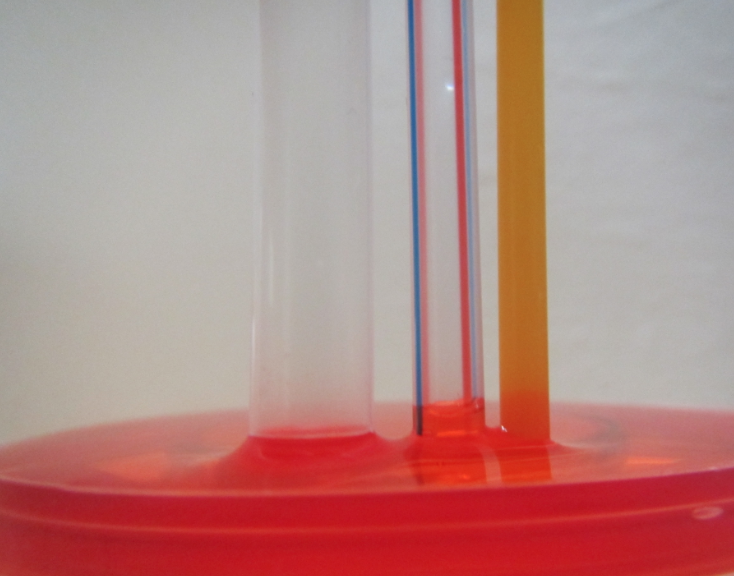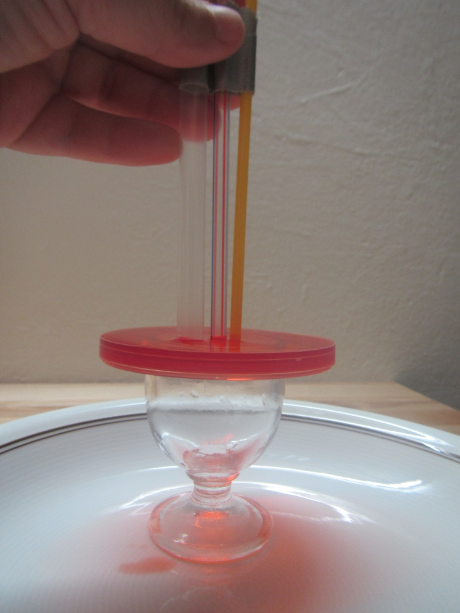
Capillary effects
When hydrostatics just doesn’t explain things.
Occasionally one notices water levels in straws that are slightly above the water levels in the glass. And of course – even though we always talk about water seeking its level and hydrostatics and stuff – we know that that’s how it should be because of the capillary effects. And then we probably all did that experiment in school where we had a very thin glass tube and the water rose really really high. But have you ever wondered how heights between straws with different diameters would differ? (Really? Only me?)
Anyway, here is how:
I do realize that the diameter of “typical” straws differs from country to country, but these are the Norwegian – and German – typical straws, so I herewith define this as universally typical. Anyway, from left to right: 8mm, 4mm and 3mm diameter on the outside. Unfortunately I don’t have the tools to measure the inner diameter. Plus I really need to get clear thin straws! Sorry the water level is so hard to see in the yellow straw – I even dyed the water for you!
But even with the imperfect materials I have – isn’t this quite an impressive result?
Btw, this is what it looked like when I did the experiment in my kitchen.
When in doubt, pile higher. And deeper.

